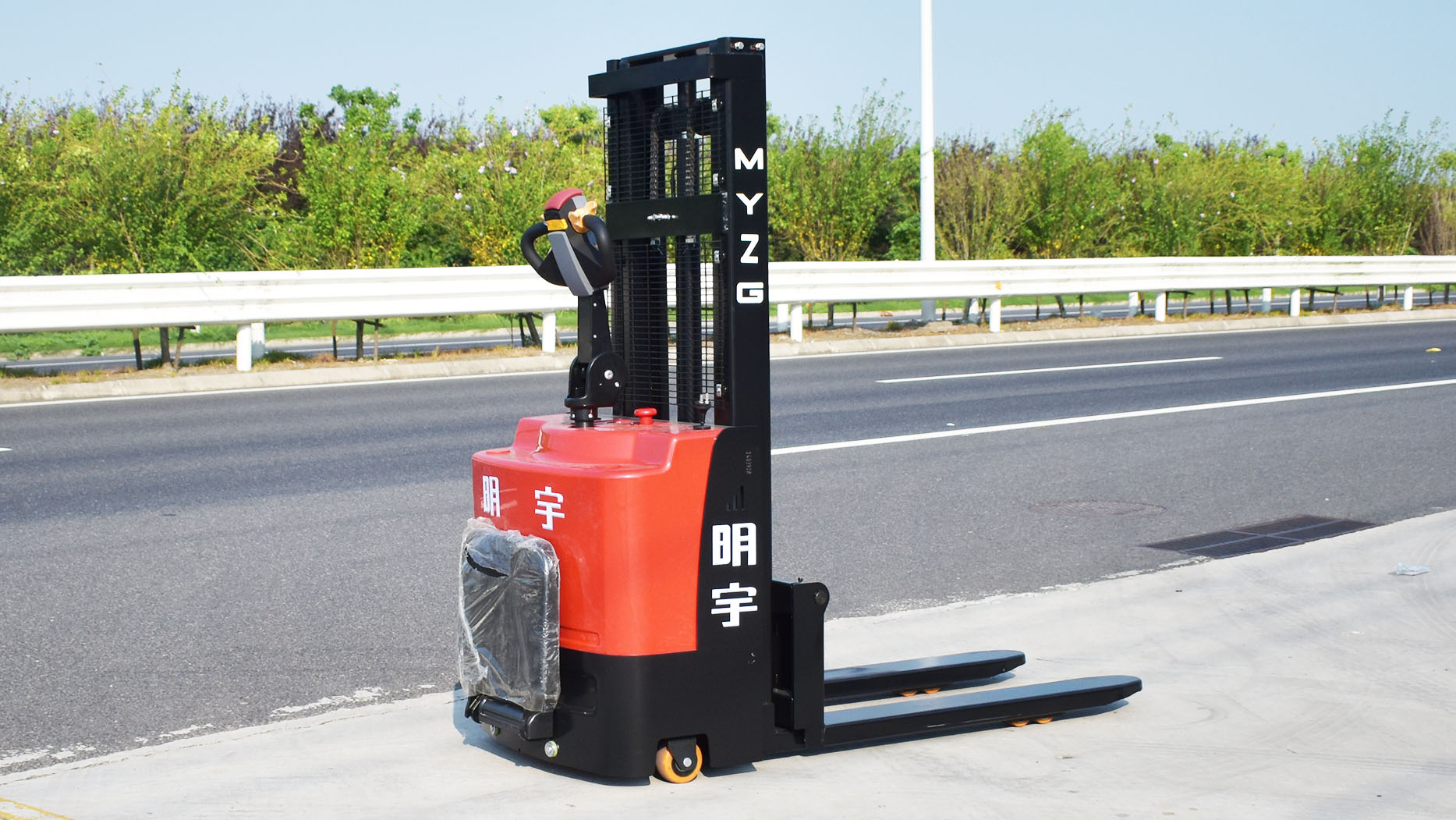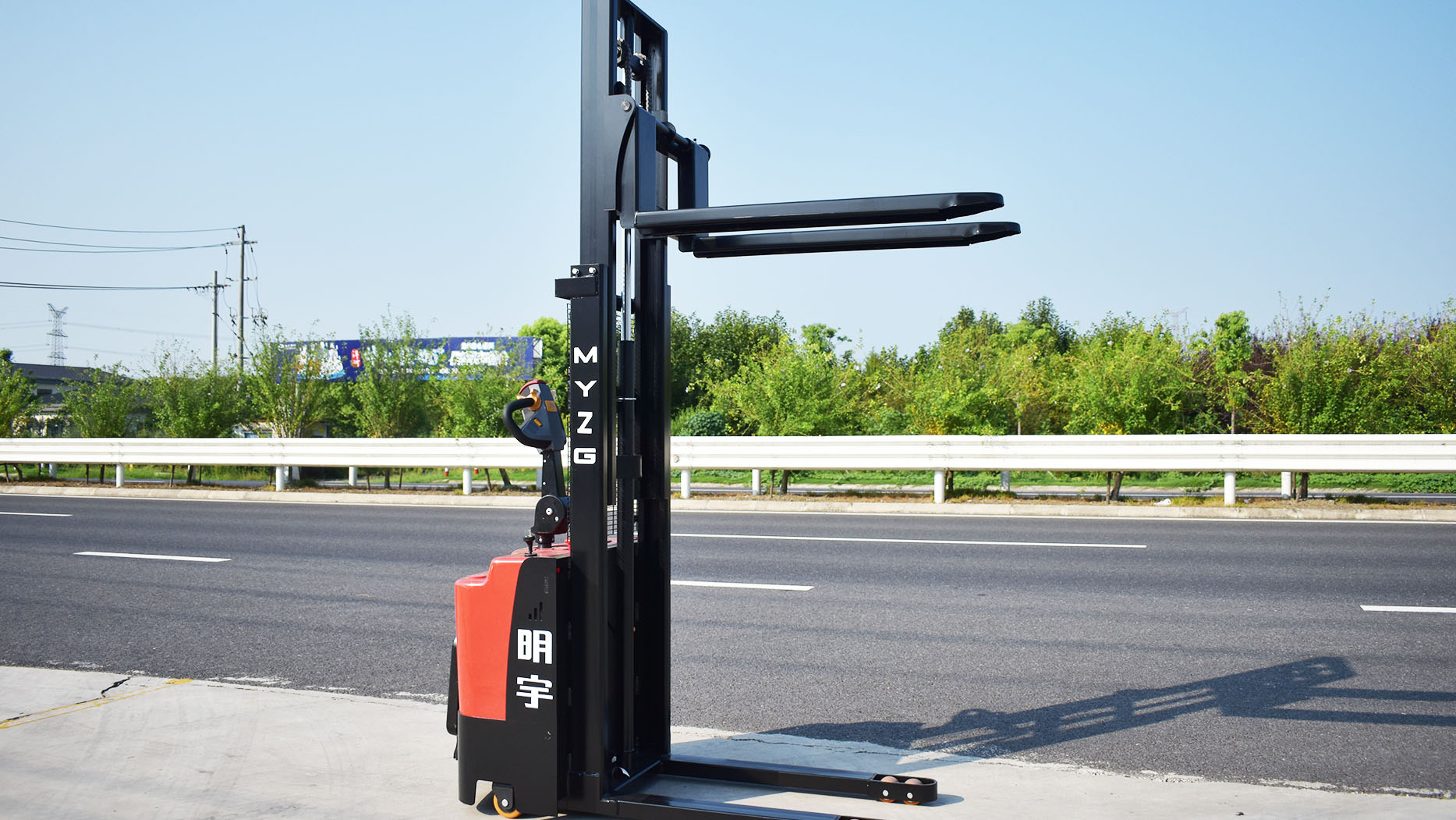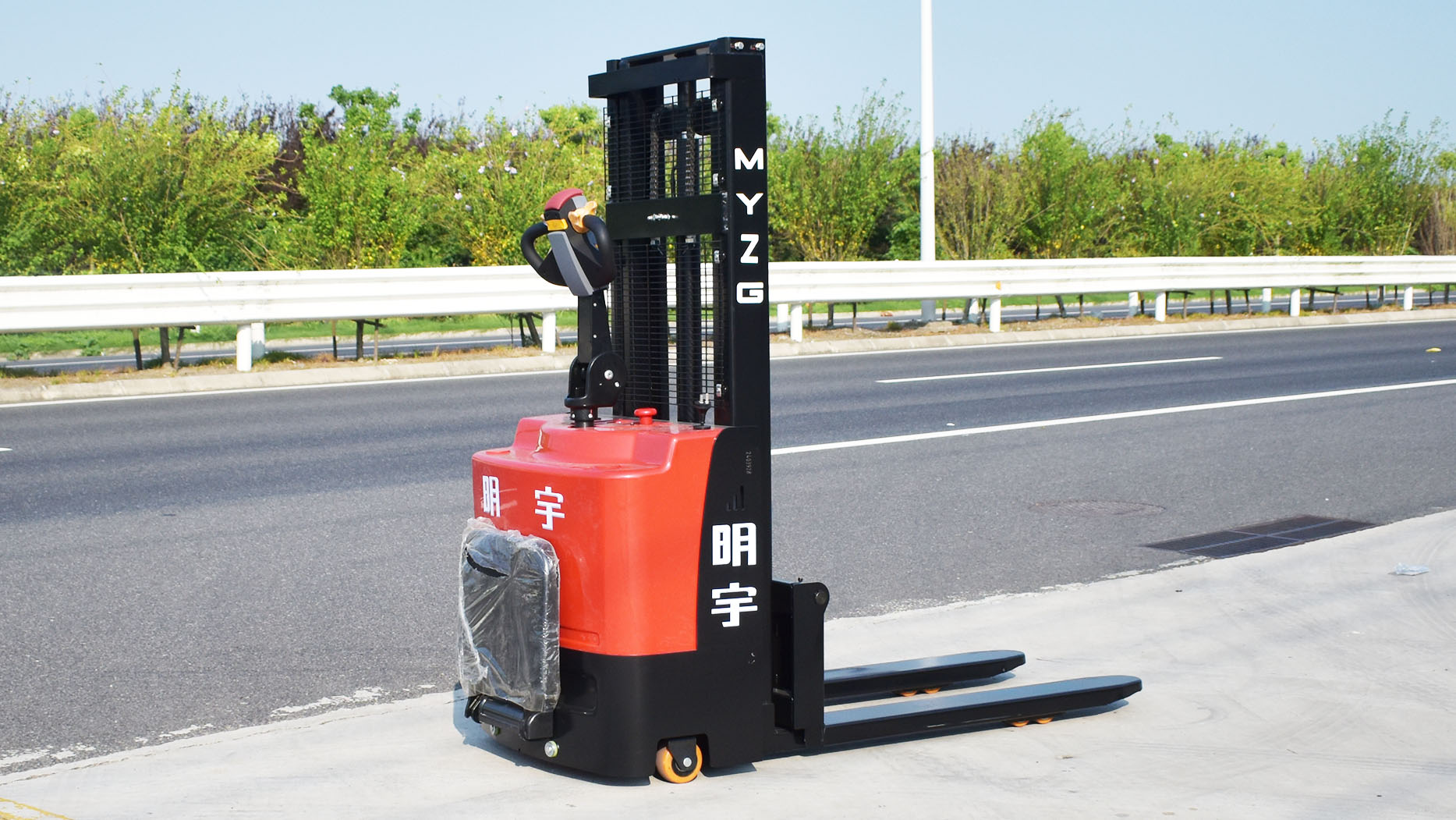I. Introduction
"In the confined spaces of warehouses and storage facilities, pedestrian stackers are essential for efficient material handling. However, their operation comes with inherent risks, including collisions, load instability, and operator injury. A momentary lapse in concentration or a malfunctioning safety feature can lead to serious accidents. Therefore, understanding and prioritizing safety features is paramount when selecting a pedestrian stacker. This article aims to illuminate the critical safety aspects that should guide your purchasing decisions. We will delve into stability, operational controls, load handling, electrical safety, and operator considerations, providing a comprehensive overview to ensure a safer working environment."
II. Stability and Structural Integrity
A. Load Capacity and Stability:
"Adhering to the rated load capacity is non-negotiable. Overloading can lead to tipping and severe accidents. Factors like load center and ground conditions significantly impact stability. Look for stackers with clear load capacity labels and stability certifications. Manufacturers should provide stability testing data.
B. Frame and Mast Strength:
"A robust frame and mast are crucial for structural integrity. Inspect the materials used and the quality of construction. Look for reinforced frames and masts that can withstand heavy loads. Mast deflection limits should be within acceptable ranges to prevent load instability."
C. Wheel and Braking Systems:
"Wheel type and grip should match the floor surface to prevent slippage. Effective braking mechanisms, such as electromagnetic or regenerative braking, are essential for controlled stopping. A reliable parking brake is crucial for preventing unintended movement on inclines. Inspect the condition of the wheels and brakes regularly."
D. Outrigger and Stabilizer design.
"The width and length of the outriggers directly impacts the stability of the stacker. Look for wide outriggers that provide a stable base. Automatic leveling systems are also helpful when working on uneven ground."
III. Control and Operational Safety
A. Ergonomic Controls:
"Intuitive and easily accessible controls minimize operator fatigue and reduce the risk of errors. Deadman switches and emergency stop buttons are critical for immediate shutdown in hazardous situations. Adjustable control handles accommodate different operator sizes and preferences."
B. Speed and Movement Control:
"Variable speed control allows for precise maneuvering in tight spaces. Smooth acceleration and deceleration prevent sudden load shifts. Automatic speed reduction on turns enhances stability. Controlled descent of forks prevents load damage."
C. Visibility and Awareness:
"Clear visibility through the mast and around the load is essential for avoiding collisions. Audible and visual warning systems, such as horns and lights, alert pedestrians to the stacker's presence. Mirrors and cameras (optional) provide additional situational awareness."
D. Steering and Maneuverability.
"Easy-to-use steering controls and a tight turning radius allow for efficient maneuvering in narrow aisles. Power steering options reduce operator fatigue.
IV. Load Handling and Protection
A. Fork Design and Safety Features:
"Fork tip protection and rounded edges prevent damage to pallets and goods. Adjustable fork widths and lengths accommodate different load sizes. Load backrests and load retainers prevent loads from sliding off the forks."
B. Lifting and Lowering Mechanisms:
"Smooth and controlled lifting and lowering speeds prevent load instability. Overload protection and pressure relief valves prevent damage to the hydraulic system. Height limit switches prevent over-extension of the mast."
C. Load Stability and Securing:
"Load securing methods and devices, such as straps and nets, prevent loads from shifting during transport. Proper pallet loading is crucial for load stability. Load sensing systems can alert operators to uneven or unstable loads."
D. Collision prevention systems.
"Object detection systems and automatic stop systems can prevent collisions with pedestrians or other objects. These systems add an extra layer of safety in busy warehouse environments."
V. Electrical and Power Safety
A. Battery Safety:
"Secure battery compartments and connections prevent battery movement and electrical hazards. Battery discharge indicators and low-voltage protection prevent damage to the battery. Safe battery charging procedures are essential for preventing fires and explosions."
B. Electrical System Protection:
"Fuses and circuit breakers protect the electrical system from overloads and short circuits. Waterproofing and environmental protection prevent damage from moisture and dust. Grounding and wiring integrity prevent electrical shocks."
C. Emergency Power Disconnects:
"Easily accessible disconnect switches allow for immediate shutdown in emergencies. Automatic power shut downs prevent damage to the electrical system in case of malfunctions."
VI. Operator and Environmental Safety
A. Operator Presence and Protection:
"Operator platforms and guardrails prevent falls. Foot protection and non-slip surfaces prevent slips and trips. Clear operating instructions and safety labels provide essential information to the operator."
B. Noise and Emissions Control:
"Low noise levels and quiet operation reduce operator fatigue and minimize disturbance to the work environment. Emission-free operation (electric models) eliminates harmful fumes. Ergonomic design reduces strain and prevents musculoskeletal injuries."
C. Training and Certification:
"Proper operator training and certification are essential for safe operation. Regular safety audits and inspections ensure that safety procedures are followed."
D. Environmental conditions.
"Temperature ratings should match the operating environment. Protection from dust and debris is important for maintaining the machines components."
VII. Conclusion
"Selecting a pedestrian stacker with robust safety features is paramount for preventing accidents and ensuring a safe working environment. Prioritizing stability, operational controls, load handling, electrical safety, and operator considerations will significantly reduce the risk of injuries and property damage. Investing in a stacker with comprehensive safety features is an investment in the well-being of your employees and the efficiency of your operations."
Post time:Mar.26.2025



